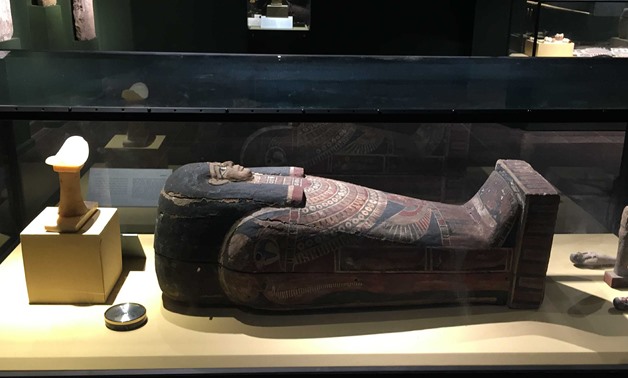 Inside Sohag National Museum - ET
Inside Sohag National Museum - ET In Pics: A sneak peek inside Sohag National Museum
By: Mustafa Marie
Wed, Apr. 15, 2020
CAIRO - 15 April 2020: Sohag National Museum houses numerous distinguished antiquities. The museum had been under construction for about 25 years, and it launched in 2018.
The Sohag National Museum is located in a privileged location on the eastern bank of the Nile, opposite to the governorate's building. It is surrounded by the Engineers Syndicate building from the north, and a spectacular hotel from the south; it is 200 meters away from the University of Sohag.
The museum houses more than 945 artifacts from various eras. It is built on an area of approximately 8,500 square meters with a cost of L.E 72 million.
It was designed in a modern way that blends the historical Pharaonic civilization with the modernity of the state, in addition to building a tourist berth for ships, serving tourist vessels while they dock in the area to facilitate the tourists' arrival to the museum.
One of the museum's most prominent artifacts is the 2-meter statue of the god Sekhmet, the god of war in ancient Egypt.
The museum also exhibits the statue of Nakht, the governor of Akhmim during the Old Kingdom. The statue is made of granite stone with a height of one meter.
The Sohag National Museum also consists of a basement, with an exhibit for the artifacts, administrative offices and a library. The museum's ground floor includes seven exhibition halls, a VIP room, and a marina for ships on the Nile.
The museum includes six exhibition halls. The first hall displays information about the kings and important figures. Every showcase in the museum exhibits how the ruling king became the center of the state for many years.
This is evidenced by the repetition of the name of the ruler or king, not only on his statues, temple, or cemetery, but also on other artifacts belonging to the individuals who held many prominent positions in the state.
The first exhibition hall includes a set of these informative cards, which are made of ivory and chronicles the names of the kings, in addition to the clay seals with the name of the product and the date of its manufacture.
As for the second hall, the museum shed light on the Egyptian families in general and the Upper Egyptian families in particular. The showcases illustrate the role and importance of Egyptian women in the family, and how she cared about her family, children, and herself.
The third exhibition hall highlights the ancient Egyptian's interest in healthcare. It displays the ancient Egyptian kitchen tools and how food was stored and preserved for long periods of time.

Inside Sohag National Museum - ET












-- Sent from my Linux system.
No comments:
Post a Comment